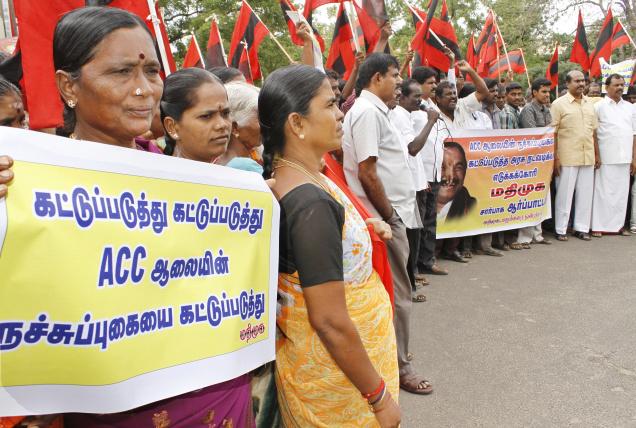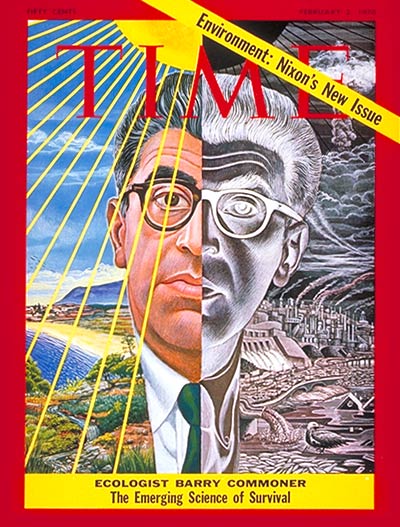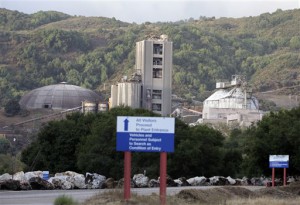Archive for October 2012
Another Waste Fire at a Waste Burning Cement Plant
Indian downwinders complain of air pollution from their local cement kiln
This time in India instead of Utah or South Carolina.
In Coimbatore, plastic and leather wastes stockpiled waiting to be burned as "fuel" at the Madukkarai cement works spontaneously combusted in a three hour fire that did not result in any known injuries at the plant.
However, thick columns of black smoke poured into the sky and that stuff, as the late Dr. Commoner would note, has to go somewhere. A lot of it will no doubt dind its way into the lungs of downwind residents. More than 200 tons of waste was gutted in the fire out of at total twice as large.
Despite local fire officials urging the cement plant to enclose the waste for some time, it had not done so. That is an apparent violation of state law. And readers, will it surprise you in the least to learn that the plant was already a longtime source of complaints from local residents?
Meanwhile the Fire and Rescue Services Department officials pointed out that storing combustible waste materials outside the plant without adequate protection was in violation of the Tamil Nadu fire service rule of 1990.
"It is a violation of section 250 of Tamil Nadu Fire Service Rules 1990 and we will issue a notice to the factory and will give them 15 days to store the waste materials inside a roofed structure with protective walls," said Subramanian.
Residents have been protesting against the cement factory for a long time and have submitted numerous petitions to the district administration. They claimed that the dust and smoke from the factory was causing major health complications, especially for senior citizens and children.
"We have raised the issue on numerous occasions and also submitted petitions to the district administration but till now no action has been taken," said C Palaniswamy, a resident of Kurumbapalayam.
There is a premeditated and orchestrated campaign by the cement industry to allow kilns to become garbage burners of all kinds of wastes. We've seen it manifest itself locally in Midlothian with the TXI permit that allows that plant to burn car parts and plastic wastes.
The more kilns that become gargabe burners, the more garbage of dubious content will pile up at kilns, the more often that garbage causes a fire. We've reported on three just since the summer alone. Being downind of an uncontrolled garbage fire isn't one of the talking points the industry boasts about when it's trying to sell kilns as the industrial equivalent of Kitchen disposals, but it's looking more like a standard feature rather than an option.
Barry Commoner: 1917- 2012
 Dr. Barry Commoner died today. It's hard to summarize the breadth and depth of Dr. Commoner's public life in a single blog post. He was one of the original scientist-activists, along with Linus Pauling and Rachel Carson, who were first concerned by the dangers of radiation poisoning in a post WWII world, and then took that concern and applied it to the entire modern world.
Dr. Barry Commoner died today. It's hard to summarize the breadth and depth of Dr. Commoner's public life in a single blog post. He was one of the original scientist-activists, along with Linus Pauling and Rachel Carson, who were first concerned by the dangers of radiation poisoning in a post WWII world, and then took that concern and applied it to the entire modern world.
He was perhaps the most eloquent scientific spokesmen for both the opportunity and trivialization of "environmentalism." To him, the environmental movement was just another name for the broader historical social justice movement that was seeking equality for women and minorities, and ending poverty and war. The same system lead to all of these ills. It was no coincidence that the worst polluters were also the worst union busters and paid women less for the same jobs. Environmentalism was just the name you gave to fighting the side effects of this rotten system when it began to harm the earth's natural cycles as well as our own.
On the other hand, he hated the ghetto of meaning that "environmentalism" had taken on recently, divorced from all of these other symptoms. Barry Commoner was no treehugger. He didn't see value in fighting for the natural world unless it had an impact on people and their collective misery.
“I don’t believe in environmentalism as the solution to anything. What I believe is that environmentalism illuminates the things that need to be done to solve all of the problems together. For example, if you’re going to revise the productive system to make cars or anything else in such a way as to suit the environmental necessities, at the same time why not see to it that women earn as much as men for the same work?”
His four informal rules of ecology were catchy enough to print on a T-shirt and take to the street: Everything Is Connected to Everything Else. Everything Must Go Somewhere. Nature Knows Best. There Is No Such Thing as a Free Lunch.
He insisted that the future of the planet depended on industry’s learning not to make messes in the first place, rather than on trying to clean them up. It followed, by his logic, that scientists in the service of industry could not merely invent some new process or product and then wash their hands of moral responsibility for the side effects. He was a lifelong opponent of nuclear power because of its radioactive waste; he scorned the idea of pollution credit swaps because after all, he said, an industry would have to be fouling the environment in the first place to be rewarded by such a program.
Downwinders benefited from Commoner's lifelong devotion to scholarship. He was an ardent opponent of all forms of waste-incineration, long ago figuring out that industry claims of chemicals going "poof" inside a furnace was at odds with basic physics. Around 1999, Commoner did a landmark study tracing the path of Dioxin emissions from major sources in North America, including TXI's waste-burning cement plant. Methodically, he showed how a poison manufactured and spit out of a smokestack in Midlothian ended-up in the Arctic Circle to become encased in fish fat or whale blubber. Everything Is Connected to Everything Else. Everything Must Go Somewhere.
Downwinders also inherits its sense of mission from the perspective that Dr. Commoner made famous. We see our job as redressing inequality and injustice as it manifests itself in public health and the human physiology. People get shat on by industry. It's our duty to help them, and if we can, build precedents for the next group so that they don't get shat on quite as bad. And if we can get these citizens to also see the similarities between themselves and others who are getting shat on by the same Powers-That-Be, then we're making progress.
Here's to Dr. Commoner and the recognition that no environmental battle is fought in a social or political vacuum.
“Instead of waiting for the EPA, we’re requiring compliance in 2013″
 That's the triumphant statement of Santa Clara County Supervisor Liz Kniss after a September 19th vote by the Bay Area Air Quality Control District to implement new emission standards for the Lehigh Permanente Southwest Cement Plant in Cupertino, the only cement plant in the San Francisco Area. The standards are as strict or stricter than the slew of new regulations proposed by EPA, and will be imposed by the original EPA deadline of 2013 instead of the expected delayed start date of 2015.
That's the triumphant statement of Santa Clara County Supervisor Liz Kniss after a September 19th vote by the Bay Area Air Quality Control District to implement new emission standards for the Lehigh Permanente Southwest Cement Plant in Cupertino, the only cement plant in the San Francisco Area. The standards are as strict or stricter than the slew of new regulations proposed by EPA, and will be imposed by the original EPA deadline of 2013 instead of the expected delayed start date of 2015.
Kniss, who serves on the district’s board of directors, said the new standards require sharply reduced emissions of various pollutants (NOx, particulate matter, mercury, dioxins, hydrochloric acid, hydrocarbons and ammonia). In the case of each pollutant, the new standard will match or exceed those recommended by the U.S. Environmental Protection Agency, scheduled for implementation in 2015. For example, the allowable average daily emissions of mercury would be reduced from 0.72 pounds to 0.05 pounds – a 93 percent reduction.
“The new (district) regulations make Lehigh Permanente the most tightly regulated cement plant in the nation,” Kniss said. “A 93 percent reduction in mercury is very dramatic.”
Why can't Texas do this as well? It could. If the Texas Commission on Environmental Quality was interested, it could pass it's own set of rules that mimicked EPA's and vote to implement them next year. But that will never happen because Governor Perry is dedicated to regulating industry with ideology, not science. In California, each region has its own air quality board that's in charge of new pollution control measures. That's why this local entity can set cement plant air pollution standards that are now the toughest in the country.
Left unsaid by any of the stakeholders is the added pressure this move in California puts on EPA in Washington DC. The Agency still hasn't finalized the watering down and delay of the new rules, despite a national public hearing in DFW in August, and thousands of submitted comments. The Cupertino plant will be operating under a distinct disadvantage compared to its peers if EPA goes ahead and delays the rules until 2015, while it must meet them by next year.
Meanwhile DFW's air quality – with more cement manufacturing capacity than any other place in the county – is still being held hostage by a state agency and Governor who don't think any more regulations of any kind are needed for the Midlothian kilns. Until we disconnect our fate from Austin's political ambitions, North Texas will never have clean air.
